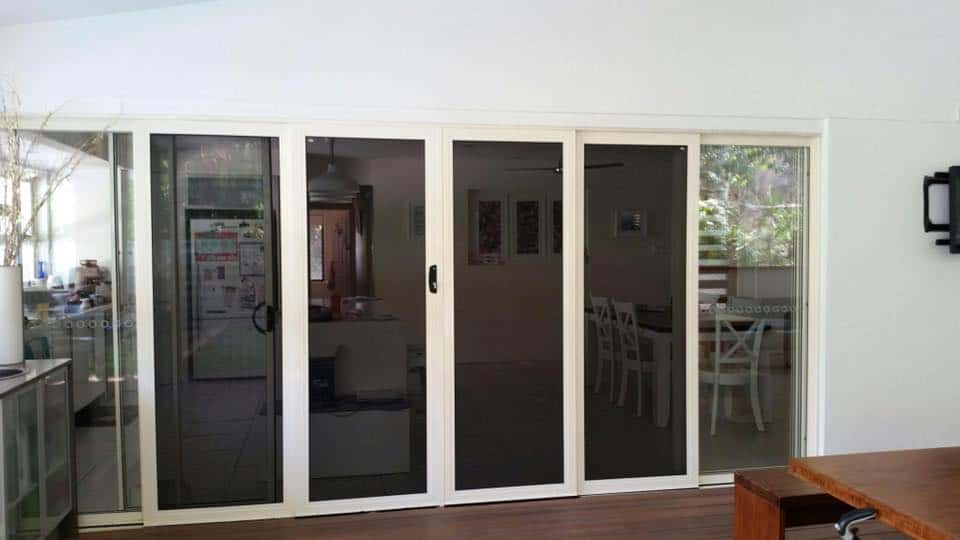DIY is on the rise with homeowners trying their hand at fixing, replacing and installing new things in their home.
If you have attempted a DIY project or two that didn’t go quite to plan, you were probably left pulling your hair out when you realised it was too much for one (inexperienced) person to handle. Sometimes you have to just give in and call the professionals.
Anything can happen with a home improvement project when you don’t know what you’re doing. Let’s be fair here, if your main employment isn’t being a handy person or working in the rough
building trade, it isn’t always the wisest idea to give it a go.
It’s important that you are honest about what you can and cannot do. After all, it’s not as easy as it looks in YouTube videos and home improvement shows like House Rules on Channel 7!
Here are some home improvements that you should never try yourself.
Don’t Mess with the Home’s Existing Insulation
For Australian homes erected prior to 1980, they likely have asbestos within the insulation in the walls, ceiling or roofing areas. This happened before it became widely known that asbestos is highly dangerous to public health when it is airborne and breathed into the lungs. It can cause a serious
respiratory disease due the asbestos fibres that reach the lungs and scar them. Ultimately, it can cause heart attacks, so it’s not to be taken lightly at all.
There are laws in Australia that you should be aware of when it comes to the disposal of asbestos. It’s advisable to get a specialist removal company to come in when you live in an older home and need to perform some work on the walls, ceiling or roof.
They can provide useful advice about what the risks are and when they should attend the property to provide a removal and disposal service.
When your insulation is not doing its job and needs to be replaced, get the help you need to remove the old insulation, clean the area thoroughly and then replace it with modern insulation. Do not attempt to do this on your own or with your buddies.
Don’t Try Repairing Your HVAC System
Your system for air conditioning, heating and ventilation is a professional one that isn’t to be meddled with. It contains sophisticated systems that can be damaged if you try to repair them yourself.
The HVAC systems often use gas, which means there is a serious risk of a gas leak if repaired incorrectly or adjusted in the wrong way. You may not realise there is a freon gas leak until you’ve already been overcome with fumes and aren’t able to get out of the house in time. It does happen, so take it seriously.
The people who work in the HVAC field are highly trained. They don’t come to the job and go out on a repair on day one. There is considerable training and education needed to work in this field. This should tell you that it’s not something to play around with.
In terms of what you can do, if you have gas heating, then certainly get the heaters professionally serviced. Doing this every year or two is best. With the HVAC systems, it’s perfectly fine to keep a pack of filters and replace a dirty filter for a clean one every month. These systems are designed to let someone change out a filter while keeping the business end of the apparatus out of reach.
Taking Out the Walls is a No-No
This one should be obvious, but you’d be surprised by how many people get stuck in with a sledge hammer without thinking it through. Homeowners think they can create any old open plan layout they want. Older homes tended to have more rooms with smaller dimensions, which doesn’t suit the craze for open layouts that has swept the country.
What you must be aware of with removing walls is which walls are load bearing and those that are not. The last thing you want to do is mess up the structural soundness of your home where the top floor starts to cave in or cracks develop down the walls.
Shoring up a house that’s been structurally damaged is no joke. Sometimes it’s not even possible and when it is, it’s extremely costly. And from a resale perspective, you must declare the problem – a housing survey will almost certainly discover it anyway – and the resale value and prospects for sale plummet as a result. Do you want to risk that?
Work with a professional who’s qualified and has verifiable experience in this line of work. Your home is your largest asset, so be careful who you hire.
Not Making Friends with Wildlife that Moves on In
Let’s face it, you get anything and everything living in Australia when it comes to wildlife. You don’t
have to be in the outback to spot a possum or some mice, or a fruit bat just hanging around. Many of them are strong, fast, and they bite too. They also carry an array of infectious diseases which, in a worst-case scenario, can end your life. The government has also weighed in on possums, setting regulations about the capture and release of possums into the wild.
It’s just not worth putting your health at risk to attempt to capture big or small creatures. You don’t have the knowledge or equipment necessary to do so. Call up a pest control team to come and deal with the problem for you. That’s what they’re paid to do, and if it’s possums, then they’ll know exactly what to do safely and legally to deal with them.
Refinishing a Timber Floor Like A Pro
Dealing with a timber floor looks easy, we know. You probably assume you can just get on your hands and knees with some sanding paper and have at it. Well, sorry to report, but that’s not only doing things the slow way – okay for one metre but horrendous for an entire floor – but it won’t get the job done well either.
You see, the professionals have wood polishing equipment that rolls forward; a little like a lawnmower. It has an engine that drives the machine and creates a beautifully refinished timber floor. Then the whole family can enjoy walking on it without worrying about roughing up their feet.
If you need more convincing, bear in mind that matching floorboards don’t come along every day, and they hit your wallet pretty good too. Getting a consistent finish on the flooring is better with the right equipment because the experienced labourer knows how their machinery works with different wood species and makes the necessary adjustments. Information like this is something that you just don’t possess the experience to know.
Painting in Pre-1970 Homes
Just like with asbestos in the insulation, Australian buildings erected before 1970 were painted using supplies that contained heavy amounts of lead. Lead is a poisonous mineral that can cause a variety of unpleasant symptoms including nausea, muscle discomfort, vomiting, and a loss of strength. We strongly suggest calling in a paint specialist that has dealt with lead paint before and can remove it safely from your home. Once the removal has been completed, it will be safe to apply a fresh coat of paint.
Thinking You’re an Electrician When You’re Not
It goes without saying that getting electrocuted isn’t any fun. If you’ve previously accidentally given yourself a jolt by touching something that was live when you had wet hands, you’ll be clear what we mean. Even if you haven’t had that particular pleasure, believe us when we say – leave any electrical work to the electrician. That’s what they are trained for.
The risk of trying to do your own electrical work doesn’t just run to your own safety. There are also other concerns like causing an overload on the entire electrical wiring for the home. It’s possible to short circuit something causing it to get damaged. And when wiring things incorrectly, a power outlet can become combustible in surprising and scary ways! Considering how affordable a decent electrician is, there’s no excuse not to get one in.
Dealing with Shutters, Screen Doors or Blinds
While homeowners try to do a lot of home improvements themselves, attempting to cut out a screen on a door and replacing it is a messy job that is very hard to get right. The screen material available at local DIY stores also isn’t as good as the materials that professional fitters like Cullens Blinds use. Crimsafe screens keep out the mozzies and other flying bugs, while still letting air circulate to keep your home comfortable & secure.
Fitting a set of blinds or shutters is an exacting job too. The measurements must be exactly right. They must be fitted properly to hang at exactly the right angle.
When shutters aren’t fitted correctly, a storm can take them clean off the side of the house. Then they become a flying liability-in-the making for neighbours and people hurrying past your home. Let Cullen’s take care of any blinds, shutters and screen door needs. They won’t let you down.
Adding a Fence or Privacy Screen
It’s a common mistake to believe that putting up a fence or a privacy screen over the weekend is simple and reasonable, but it’s not on both accounts. There are building codes and other regulations in Australia about putting up fencing on your property. If you try to do it yourself and the local council pay your home a visit to inspect it, you could be walking right into trouble that you don’t need. The fence could then cost more than you ever expected, and they might even order you to tear it down.
Hire a professional that works with a team of people putting up privacy screens and fencing every day. They will adhere to the codes and regulations, so you won’t have to worry about paying twice over either.
Working on the Roof
Getting up on the ladder to fix a few roof tiles after a storm isn’t uncommon. However, the 5,000+ Australians who visit hospital ever year from injuries due to a ladder fall would advise against it.
As well as feeling particularly sorry for themselves when they must explain what happened, some falls can be surprisingly severe depending on the distance of the fall, the speed, how the person landed, and what they landed on.
While having someone hold up the ladder to keep it steady and straight certainly helps, it doesn’t prevent you from missing a rung on the ladder and losing your balance. Then you run the risk of landing on the person below who was holding the ladder steady, which makes matters even worse.
It’s better to get a roofer to come in to fix what’s needed and avoid the risk altogether. They use safety harnesses and other equipment like a hard hat to avoid serious injuries.
Staying safe while getting into the home improvement game should be of paramount importance. While it’s reasonable to want to save money here and there when renovating your house or apartment), it’s seriously unwise to take on any of the tasks detailed in this article. It does you no good to cause short- or long-term injury, or impair your health when performing home improvements because you didn’t pay attention to what was safe to do. Knowing your personal limits on what you feel safe carrying out versus tasks that you ought to get someone in to do, is important too.
How have your home improvement projects been progressing? Have you hit a roadblock when
trying to do too much and ultimately needed help? We’d love to hear about them.





